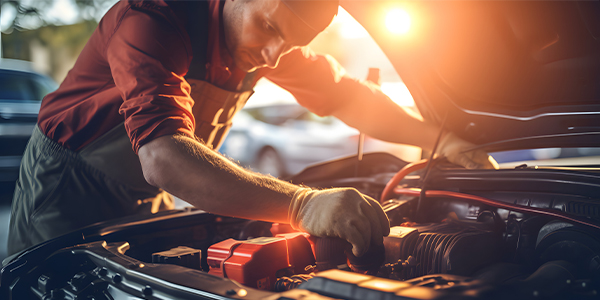Last month I attended the grandaddy of all automotive trade shows in Las Vegas. “Automotive Aftermarket Industry Week” (AAIW) is a multi-show affair that fills both the Las Vegas Convention Center and the Sands Expo Center with more than 2 million square feet of exhibits and cars. The event is not open to the general public, but it still draws more than 135,000 attendees from around the world.
The two main shows are AAPEX (Automotive Aftermarket Products Expo), which this year included more than 2,000 aftermarket parts and equipment suppliers, and SEMA (Specialty Equipment Market Association), which featured more than 2,000 performance parts, aftermarket accessories, wheels and tires exhibitors, plus vehicle manufacturer displays.
Piggybacking on these events was the Congress of Auto Repair (CARS) sponsored by the Automotive Service Association (ASA). This event was for shop owners and technicians, and featured three days of in-depth technical seminars (see www.carsonline.org).
It was a LONG week!
The AAPEX show alone had more than 18 miles of aisles to explore, and SEMA probably had four times that number. Needless to say, I didn’t see it all.
The reason I’m writing about these shows is because most of the new aftermarket products, accessories, tools and equipment that have been recently introduced or will be introduced in 2006 were previewed at AAPEX and SEMA.
One of the most interesting new products I saw was a $50,000 “robotic” alignment machine that automatically checks wheel alignment without human intervention (except for driving the car onto the alignment rack). The machine has two alignment heads (one on each side) that automatically move fore and aft to locate the front and rear wheels, then check the alignment of the wheels and display the results for a pass-fail check. The machine will allow high-volume tire shops to check alignments quickly and accurately, and without the need for an alignment technician (except when alignment adjustments are required). This could be the start of a whole new trend toward more automation of diagnostics.
I also saw more new scan tool suppliers than I’ve ever seen before. Many were companies from Europe or Asia who make scan tools for their own markets and are now trying to grab a piece of the North American market. Many of these scan tool manufacturers claim their tools have the same capabilities as the import OEM scan tools — and at a much lower price.
One thing is for sure, scan tool diagnostics continues to evolve at an ever faster pace. Entry-level tools now give you more bang for your buck, and some DIY scan tools are almost as capable as professional models were a few years ago. One difference that still separates DIY and professional scan tools is that only the professional tools can initiate onboard tests and access codes and systems other than engine and drivetrain (things like ABS codes, airbag codes, climate control codes, suspension codes, etc.).
At a seminar called “OEM Service Information Update,” I learned that the U.S. Environmental Protection Agency will be auditing OEM service information websites for searchability, navigation and overall content (see www.nastf.org/oem.html for a list of OEM websites where you can access diagnostic and repair information for a daily user fee). The EPA is using several hundred volunteer technicians to review each of the OEM websites. The goal is to make it easier to find technical information on such things as flash reprogramming PCMs and Mode 06 diagnostics. These topics are often buried or hard to find on some OEM websites.
The EPA requires vehicle manufacturers to make all of their emissions-related diagnostic information available on the Internet, and allows them to charge a “reasonable” fee for access (typically less than $20 for a one-day subscription). Longer subscription terms are available, but most users just go to the OEM websites on an “as needed” basis to look up service information for a specific vehicle. The number of people using the OEM service information websites is still relatively small (fewer than a couple hundred daily subscribers per month on most websites), but the numbers are growing as more and more people become aware of the information that is available and how to access and use the websites.
If you don’t have a broadband Internet connection yet and are still relying on paper manuals for most your service information, good luck! The technology curve is going vertical and you’ll probably find yourself less and less able to diagnose and repair today’s vehicles.
At a CARS seminar on hybrid vehicles, I saw the statistics on how rapidly hybrid vehicles are proliferating and how much special knowledge is required to diagnose and service these vehicles. Hybrid vehicles require certain safety precautions as well as insulated hand tools and gloves if you’re working on high-voltage electrical components. Believe me, when you’re dealing with 300-plus volts, you don’t want to take any chances. One mistake and you’re toast!








